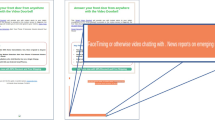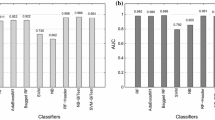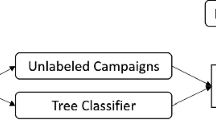Abstract
This chapter focuses on the taxonomy of scam emails collected from various sources and investigates long-term trends in scam emails. We first describe a large-scale compendium of scam emails collected from various sources, and then present an analysis regarding what kind of scams exist, what their structures are, and how they are related to each other. We then describe a machine learning classifier built based upon the taxonomy analysis, and use it to cluster scam emails into major scam categories. Then an analysis of different trends from each scam category is presented. Our analysis shows a clear trend that spam-like non-targeted scams are decreasing continuously while targeted scams with specific victims have been getting more prevalent over the last 10 years.
Access this chapter
Tax calculation will be finalised at checkout
Purchases are for personal use only
Similar content being viewed by others
Notes
- 1.
Oddly, to scammers, it is not people who are entered in lotteries, but email addresses. Correspondingly, email addresses, not their owners, are the winners of the lotteries.
References
M. Beals, M. DeLiema, M. Deevy, Framework for a taxonomy of fraud. http://fraudresearchcenter.org/wp-content/uploads/2015/07/FFRC_Taxonomy_FullReport_7-22-15.pdf (2015)
C. Cortes, V. Vapnik, Support-vector networks. Mach. Learn. 20 (3), 273–297 (1995)
Federal Bureau of Investigation, Internet Crime Complaint Center (IC3) annual reports. https://www.ic3.gov/media/annualreports.aspx
M. Jakobsson, Z. Ramzan, Crimeware: Understanding New Attacks and Defenses, 1st edn. (Addison-Wesley Professional, Indianapolis, 2008)
K.S. Jones, A statistical interpretation of term specificity and its application in retrieval. J. Doc. 28 (1), 11–21 (1972)
F. Pedregosa, G. Varoquaux, A. Gramfort, V. Michel, B. Thirion, O. Grisel, M. Blondel, P. Prettenhofer, R. Weiss, V. Dubourg, J. Vanderplas, A. Passos, D. Cournapeau, M. Brucher, M. Perrot, E. Duchesnay, Scikit-learn: machine learning in Python. J. Mach. Learn. Res. 12, 2825–2830 (2011)
Author information
Authors and Affiliations
Editor information
Editors and Affiliations
Rights and permissions
Copyright information
© 2016 Springer Science+Business Media New York
About this chapter
Cite this chapter
McCoy, D., Park, Y., Shi, E., Jakobsson, M. (2016). Identifying Scams and Trends. In: Jakobsson, M. (eds) Understanding Social Engineering Based Scams. Springer, New York, NY. https://doi.org/10.1007/978-1-4939-6457-4_2
Download citation
DOI: https://doi.org/10.1007/978-1-4939-6457-4_2
Publisher Name: Springer, New York, NY
Print ISBN: 978-1-4939-6455-0
Online ISBN: 978-1-4939-6457-4
eBook Packages: Computer ScienceComputer Science (R0)




